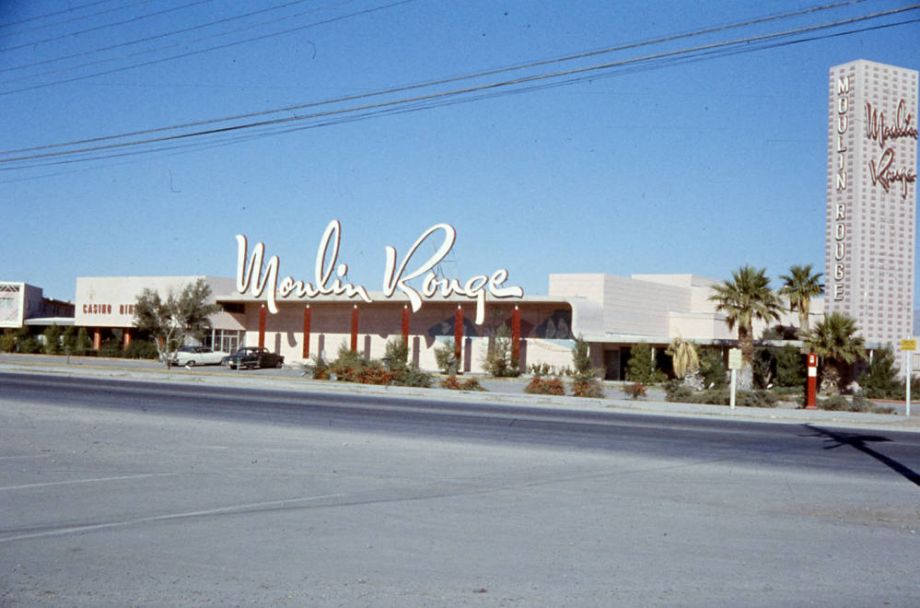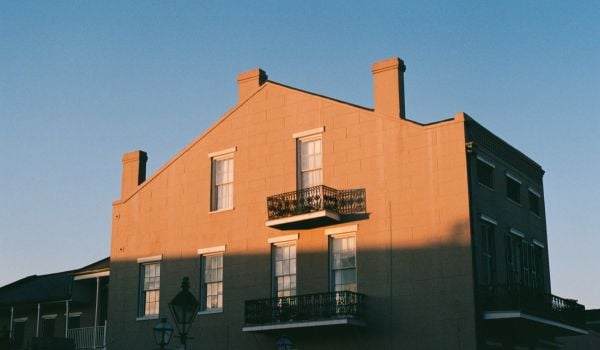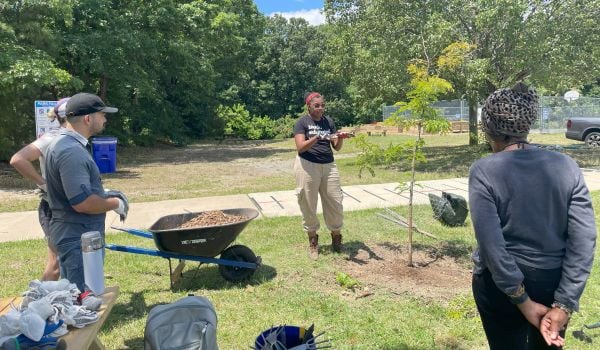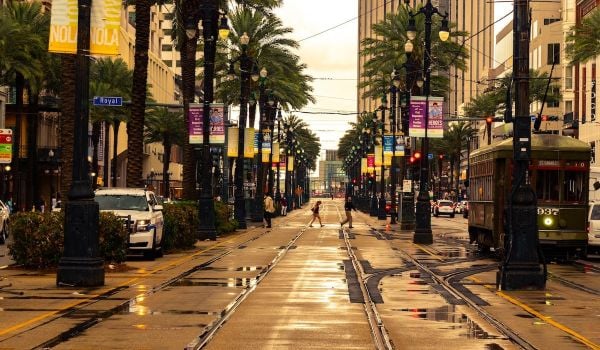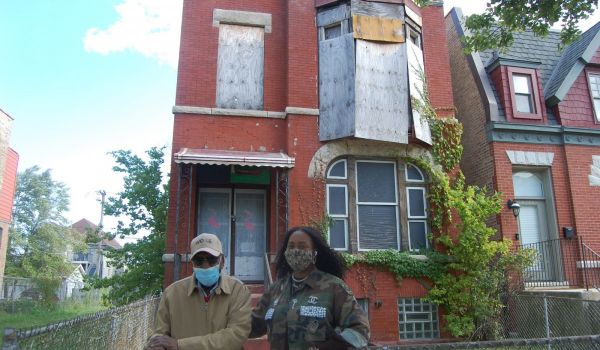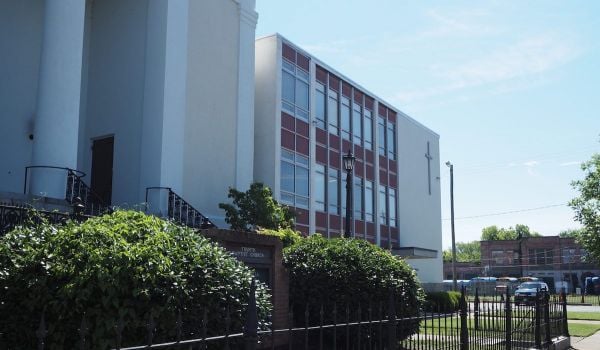There used to be two Las Vegases. On the east side of the city that exists today, which was officially incorporated in 1905, most of the land was owned by U.S. Senator and railroad magnate William Clark. That side has become the Vegas of the popular imagination — the neon strip lined with desert palm trees and glitzy casinos. The county that was founded four years after the city was named for Clark.
On the western side of the city was the McWilliams settlement, named for J.T. McWilliams.
The Westside was home to many African-American residents and, during the early 20th century, as it became the “dispreferred” side of town, says Heidi Swank, a Nevada state representative and executive director of the Nevada Preservation Foundation, it also became the place where black residents were forced to live under segregation laws. The Strip boomed. Black business owners were forced to move to the Westside or lose their licenses.
So over time, Swank says, “It became this very bustling, thriving African-American community, basically because that’s the only place where people were allowed to live and have businesses.”
People began to leave the neighborhood after the city banned segregation, and a unique heyday of black commerce and culture faded into the rear-view mirror. Today, Swank says, the history of the area is well known, but the significant buildings and properties are not. Meanwhile, some groups are concerned about gentrification spilling over from downtown Las Vegas.
“We are very worried about the historic fabric of this community,” Swank says. “Lots of families have been there since segregation, and lots of folks who left still feel some very strong ties to the Westside.”
The Nevada Preservation Foundation is planning to survey 2,000 properties in the historic area of the Westside, to sort through which properties might be preserved, and to make nominations for designation to the National Register of Historic Places. And now it has the money to do the work. Earlier this month, the National Trust for Historic Preservation and its African-American Cultural Heritage Action Fund announced a grant to the Nevada Preservation Foundation, along with 21 other preservation efforts around the U.S., aimed at adding layers to Americans’ understanding of history. The $1.6 million in funds for this year’s grants were supplied by the Andrew W. Mellon Foundation. Brent Leggs, executive director of the Action Fund, says the goal is to eventually raise and distribute $25 million for preservation of African-American historic sites.
“We are looking to uncover stories and places that helps us to craft a new narrative about the black experience in America,” Leggs says. “And a lot of those narratives that are often overlooked or underrecognized are out west. We wanted to provide a grant to learn more … about African-Americans in Las Vegas during the period of Civil Rights and to understand the history, the neighborhoods, the buildings, and the culture — to be able to tell that story and to bring some recognition to it.”
The Action Fund sent out a call for proposals last December, and received 462 letters of intent for preservation work around the country, Leggs says. After sorting through the letters, it invited 52 organizations to submit full applications. Those were whittled down to 22 grants, ranging in size from $50,000 to $150,000. At the same time that the Action Fund is interested in preserving historic sites, it also recognizes that there are concerns about historic preservation being connected with gentrification and displacement, Leggs says. The National Trust last year launched a new research project to study those connections in 10 American cities.
“Personally, living in Washington, D.C., and having lived in other cities, I’m starting to see a racial and economic shift,” Leggs says. “Gentrification and displacement is happening, it’s real, and … we have to find some solutions for small and midsize cities to be able to maintain and celebrate diverse culture.”
The Las Vegas project isn’t the only one that has gentrification in mind. The Preservation Resource Center of New Orleans received an award to launch a “Revival Grants” program in Treme, the historic neighborhood adjacent to the French Quarter, to help low-income homeowners to make repairs to homes in the historic district. Treme is unquestionably gentrifying, says Danielle Del Sol, the executive director of the Preservation Resource Center. And for many of the remaining low-income homeowners, historic guidelines for home maintenance are a burden. The grants will be small, likely between $7,500 and $10,000, and given to homeowners that have received violations from the New Orleans Historic District Landmarks Commission. Grantees must earn less than 80 percent of area median income, Del Sol says.
“We’ve always had connections to the neighborhood, but this is the first really targeted attempt to work with this community in a holistic way,” Del Sol says. She believes that historic property guidelines are an important and effective way to preserve a city’s culture, but understands that burdensome costs can be “an unfortunate byproduct” of preservation.
The grants will be given for narrow restoration projects — replacing windows and doors, fences, decorative elements and gutters. But Del Sol says the group hopes the grants will help homeowners who want to stay to withstand pressure from development and turnover. Treme has been a hotspot for a trend of converting homes to short-term rentals that has swept the city, where tourism is a primary industry. The Preservation Resource Center says it has heard of some homeowners in Treme who have literally zero full-time neighbors left on their blocks.
“There are definitely less low-income homeowners than there were, say, 10 years ago, but there are still a lot,” Del Sol says. “And because of the increasing pressure from short-term rentals, that makes it more important.”
Leggs, of the National Trust’s Action Fund, says that investing in projects that can help stabilize communities will also help preservationists move past the common “moral imperative” argument they make in favor of their discipline, which is simply that history is important and historic properties need to be preserved.
“That’s a big motivator for us,” Leggs says. “It is our goal to be able to educate mayors and decision makers in cities and real-estate developers to understand that equitable development means having a strategy to mitigate or minimize the impact of displacement in black neighborhoods. We want to see a more just American city, where black people are benefiting from the economic development and renaissance in cities.”
This article is part of Backyard, a newsletter exploring scalable solutions to make housing fairer, more affordable and more environmentally sustainable. Subscribe to our weekly Backyard newsletter.

Jared Brey is Next City's housing correspondent, based in Philadelphia. He is a former staff writer at Philadelphia magazine and PlanPhilly, and his work has appeared in Columbia Journalism Review, Landscape Architecture Magazine, U.S. News & World Report, Philadelphia Weekly, and other publications.
Follow Jared .(JavaScript must be enabled to view this email address)



